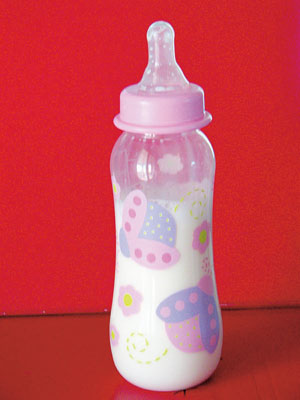
Bottle Battles: Learning to let go
Getting some toddlers to let go of their beloved bottles can be a real battle. A bottle starts out as a nutritional necessity, but in time it can come to represent all the good things in life: nourishment, comfort and parental bonding. Giving a bottle for more than regular mealtimes can be an easy way to make your little one happy, but it can also very quickly become an unhealthy habit that can affect sleep and cause dental problems. Unfortunately, for some families, doing away with the bottle can turn into an epic battle that lasts months and even years.
Bottle dependency can develop very quickly. Sucking from a bottle is much easier than chewing. In fact, it’s so easy that many babies and toddlers can literally do it in their sleep. For babies, that is fine. But as weaning progresses, toddlers with too much access to bottles tend to drink more than they would otherwise, leaving them with little motivation to explore new foods during the formative feeding years.
Another reason to ban the bottle relatively early is that toddlers often suck on a bottle as a form of self-comforting rather than because they are genuinely hungry or thirsty. This can become a headache when toddlers wake in the middle of the night out of habit and demand a bottle to help them fall asleep again.
Sweetened drinks can aggravate the problem. Constant exposure to sugary liquids or even milk pooling in the mouth can also lead to tooth decay, and children who spend time lying on their backs with a bottle have a greater risk of ear infection.
To make bottle weaning easier, introduce drinking from cups as soon as your baby starts reaching and grabbing things, at 6 to 9 months of age. The cup won’t replace a bottle right away, and it will most certainly be messy at first, but an early start gives baby a chance to practice sipping. Separate cuddling from drinking, and save lap time for other activities such as reading or playing games.
Most 12-month-olds should only need 16 ounces of milk a day, as solid food becomes a bigger part of their diets. By 15 months, your toddler should be able to eat enough table foods to meet his daily nutritional requirements, and drinks can be offered by cup or straw instead of by bottle.
Preparation and the right mindset will help with bottle weaning. Have other options ready, such as a small plastic cup, sippy cup or straw. Stock up on other sources of calcium in case your child resists the transition, or refuses to drink milk that’s not in a bottle. Toddlers can easily fall back into bad bottle habits, so make sure ayi and other caregivers are in on the plan and follow your rules. Olivia Lee
Got a question? Singaporean Olivia Lee (olivianutrition@gmail.com) has an MSc in
nutrition and provides nutrition counseling.



